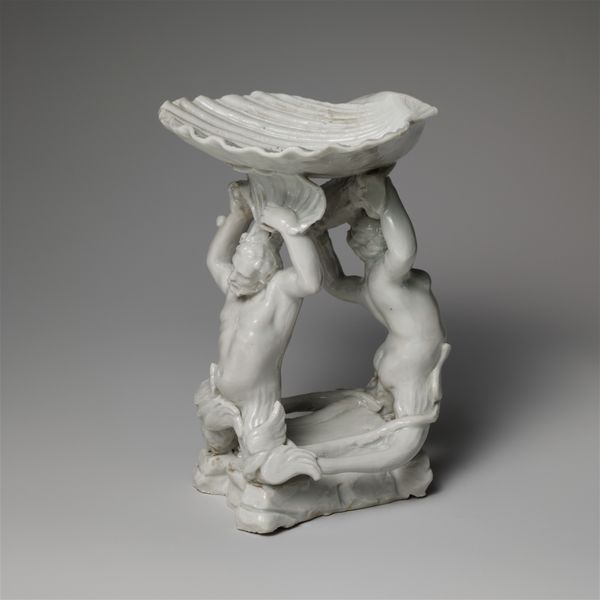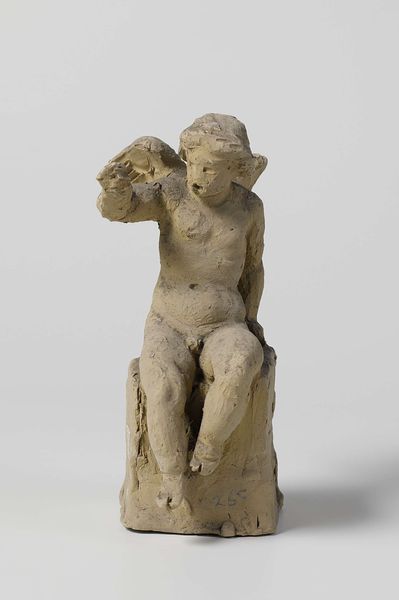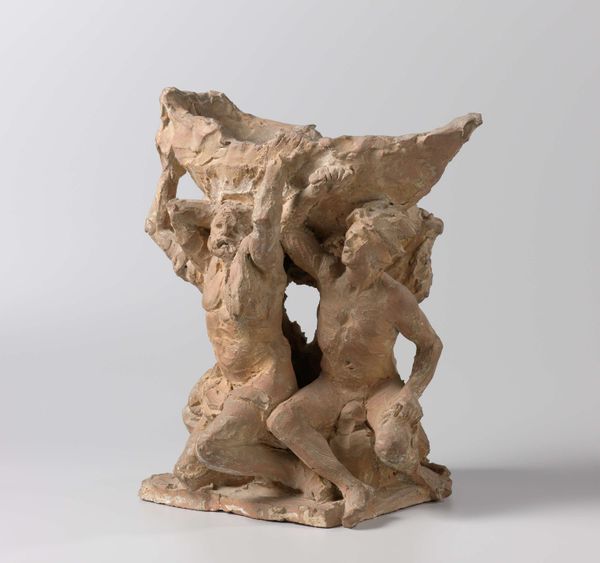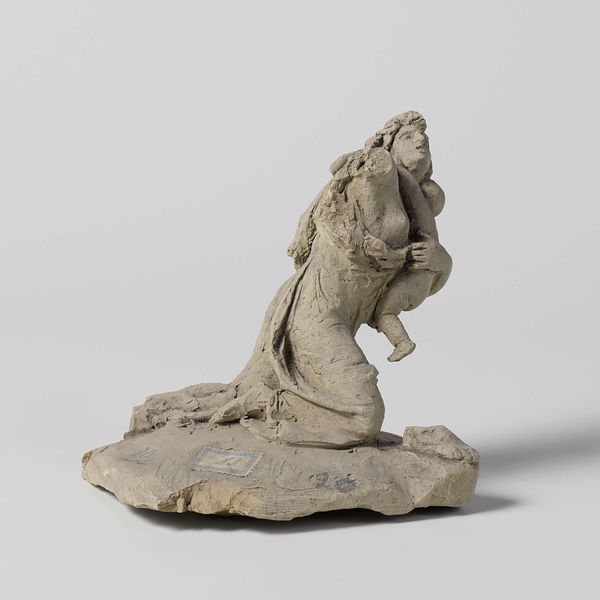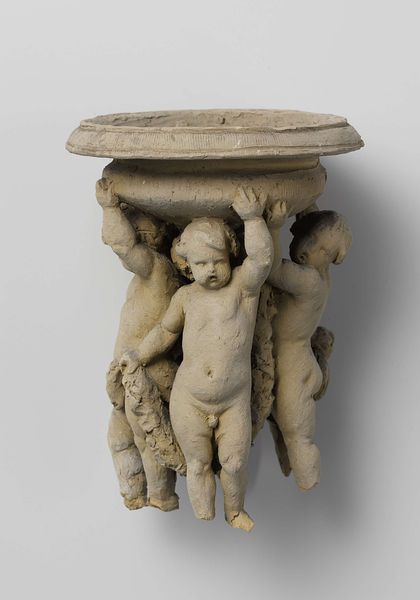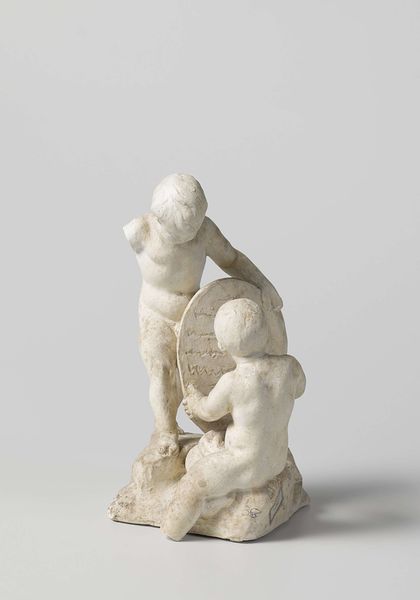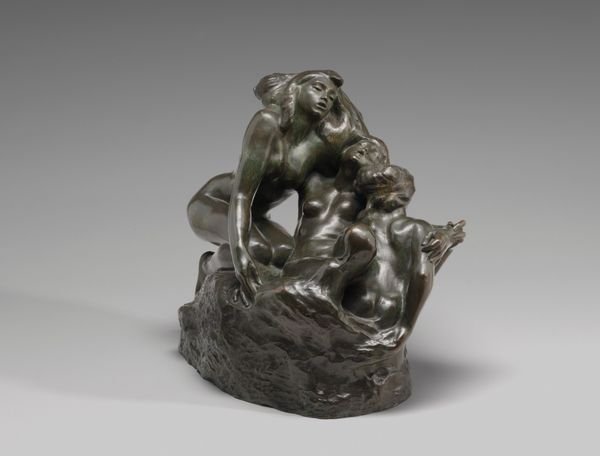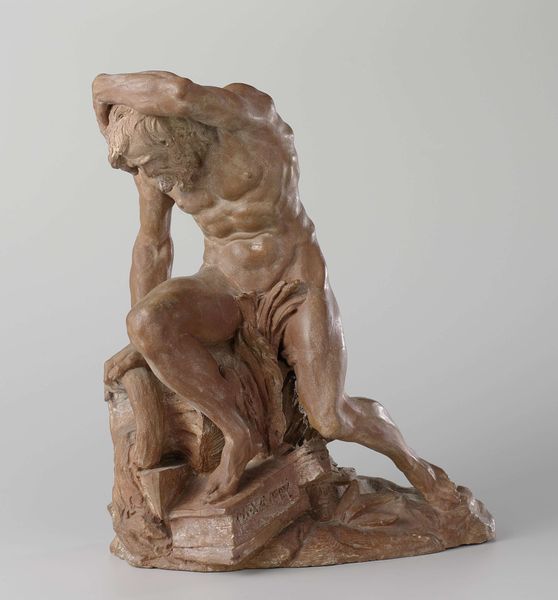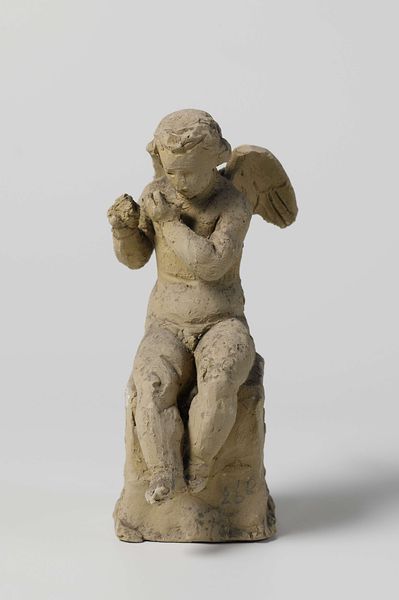
alabaster, sculpture
#
sculpture
#
alabaster
#
landscape
#
figuration
#
sculpture
Dimensions: height 19 cm, diameter 12 cm
Copyright: Rijks Museum: Open Domain
Curator: The artwork we’re viewing is an "Ontwerp voor een bloemenstandaard," or a design for a flower stand, crafted sometime between 1828 and 1905. It's attributed to Eugène Lacomblé. Editor: It’s smaller than I imagined! My first thought is how precious, almost doll-like, yet the alabaster gives it a serious weight. Curator: It’s fascinating to consider the flower stand not just as an object, but as a social artifact. Flower stands became quite popular amongst the elite during that period as decorative sculptures. They allowed them to showcase their status through both the flowers and the sculptural support. Editor: I agree, I also think it's crucial to think about how this piece would have been produced. Alabaster isn’t the easiest material to work with. Look at the details of the figures and the foliage; you can almost feel the maker’s hands carefully shaping the soft stone. The level of skill to get the little cherubs right. I think that should also be considered high art. Curator: Precisely! It speaks volumes about the society's appreciation for artisanal skill. A piece like this highlights a cultural context wherein classical forms were fashionable in the domestic lives of the elite. The imagery of cherubs, borrowed from classical antiquity, suggests notions of innocence and purity, idealized concepts promoted and consumed by the burgeoning middle and upper classes. Editor: Seeing how time and, possibly, less-than-ideal care have worn at the piece— a chipped edge here, some surface wear there—makes its materiality even more potent. These marks, those small cracks, become evidence of the lives it’s lived around humans; they make it real, even raw. Curator: Ultimately, this flower stand design gives us a glimpse into a particular historical moment, demonstrating how art, design, and social values were intricately linked. Editor: Indeed, and hopefully, appreciating how it was made gives visitors insight into broader discussions of taste, skill, and labor.
Comments
No comments
Be the first to comment and join the conversation on the ultimate creative platform.
